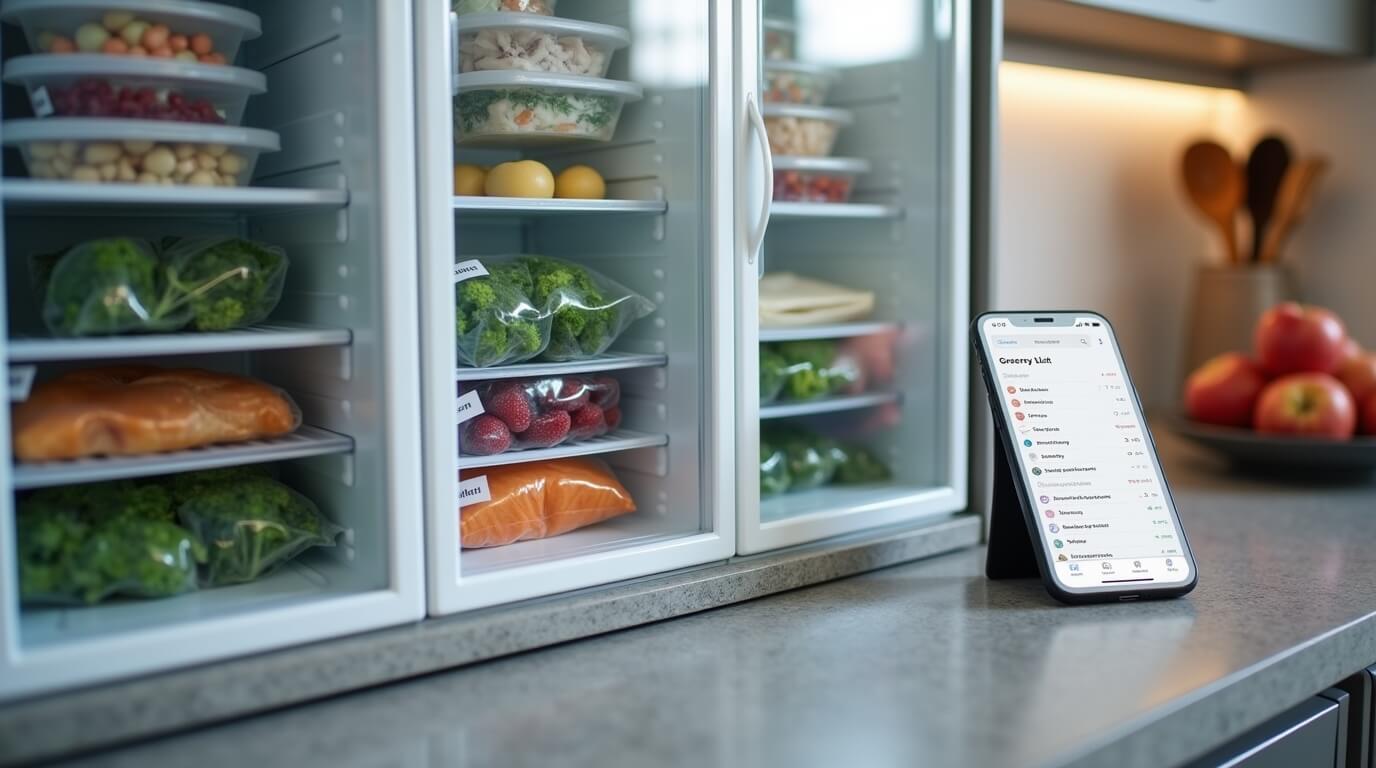
A home freezer neatly arranged with frozen fruits, vegetables, proteins, and prepared meals in labeled containers for easy access.
By Emma on September 25, 2025
How to Stock Your Freezer with Groceries That Actually Get Used
Opening a packed freezer only to find freezer-burned meat or forgotten leftovers is a familiar frustration. Stocking your freezer is a smart way to save money, stretch your grocery trips, and make meal prep easier—but only if you stock it with foods you’ll actually use.
Here’s how to fill your freezer the right way, so it becomes your mealtime lifesaver instead of a cluttered cold cave.
1. Start with a Plan
Before loading up, think about how your family eats. Do you rely on quick weeknight dinners? Do you meal prep in bulk? Are frozen fruits and veggies part of your routine?
➡️ Pro tip: Use OnlineGroceryList.com to plan your freezer inventory. You can track what you already have and add only what’s missing.
2. Must-Have Freezer Staples
Here are freezer-friendly groceries that make sense for most households:
-
Vegetables: Peas, corn, spinach, broccoli, and mixed veggie blends. Great for quick sides, soups, or stir-fries.
-
Fruits: Berries, mango chunks, pineapple, and peaches. Perfect for smoothies, baking, or oatmeal toppings.
-
Proteins: Chicken breasts, ground beef or turkey, fish fillets, shrimp, and plant-based proteins.
-
Bread & Grains: Sliced bread, tortillas, bagels, and cooked rice.
-
Dairy: Shredded cheese, butter, and even milk (yes, it freezes fine if used for cooking or baking).
-
Prepared Foods: Homemade soups, chili, lasagna, or casseroles portioned in freezer-safe containers.
-
Snacks & Quick Meals: Frozen pizza, veggie burgers, and dumplings for those “no time to cook” nights.
3. Freeze in Portions
One common mistake is freezing items in bulk. A five-pound block of chicken isn’t convenient when you only need two pieces for dinner.
Instead, divide meat, grains, and soups into meal-sized portions before freezing. Label with the name and date so you can easily grab what you need.
4. Keep It Organized
A messy freezer leads to forgotten food. Use bins, bags, or even labeled baskets to keep things neat. Group similar items—vegetables in one section, proteins in another, and prepared meals in their own bin.
➡️ Bonus: Keep an “eat soon” section for items that need to be used within the next week or two.
5. Rotate and Refresh
The “out of sight, out of mind” problem is real with freezers. Every month, do a quick check: pull older items to the front, toss anything with freezer burn, and update your digital list.
With OnlineGroceryList.com, you can mark what’s in your freezer so you avoid buying duplicates and waste less food.
6. Know What Not to Freeze
Not everything holds up in the freezer. Skip these items unless you like disappointment:
-
Lettuce or cucumbers (they turn mushy)
-
Cream-based sauces (they often separate)
-
Soft cheeses (texture changes drastically)
-
Fried foods (lose their crispiness)
Stick to freezer-safe groceries that stay tasty after thawing.
7. Save Time with Freezer Meal Prep
Freezer stocking isn’t just about ingredients—it’s also about ready-to-go meals. Double a recipe and freeze half for later. That way, dinner is as easy as reheat and serve.
Some freezer-friendly favorites include:
-
Chicken stir-fry packs (chicken + veggies + sauce)
-
Pre-cooked taco meat
-
Breakfast burritos
-
Homemade soup or chili
The Bottom Line
Your freezer can either be a treasure chest or a black hole. Stock it with the right groceries, freeze in smart portions, and keep it organized, and it becomes your secret weapon for stress-free meals.
With OnlineGroceryList.com, you can track your freezer inventory, build smarter shopping lists, and make sure your frozen foods actually get used.
A well-stocked freezer isn’t just about saving money—it’s about saving time, energy, and sanity during the week.